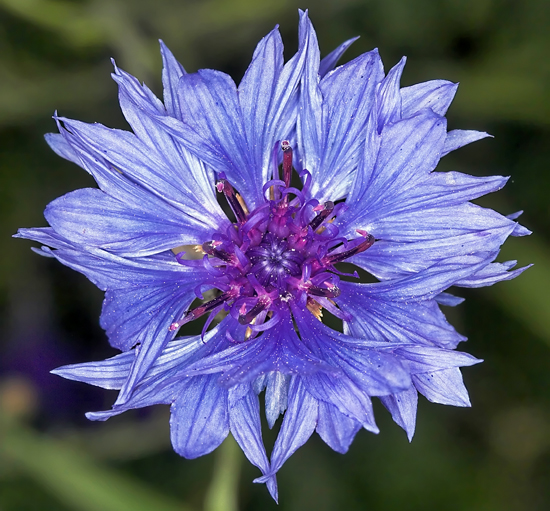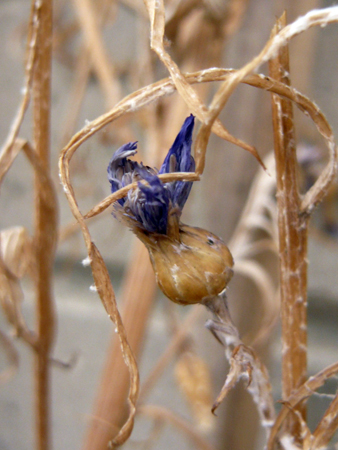National Symbols: National Flower
Cornflower (common name)
Centaurea cyanus (scientific name)
Designation
Unofficial
Also Known As
Bachelor’s buttons, basket flower, and blue-bottle
Classification
- Kingdom: Plantae
- Division: Magnoliophyta
- Class: Magnoliopsida
- Order: Asterales
- Family: Asteraceae
- Genus: Centaurea
- Species: C. cyanus
The Flower
Related to the daisy, the cornflower is a small, slender, annual plant with distinctive blue flowers that are highly valued both by gardeners and florists. It has an upright, often branched, stem; lower leaves are long, narrow and split into irregular lobes, while upper leaves are smaller and more symmetrical. The leaves and stem are grayish-green, with fine gray hairs. The flowers grow at the ends of the stems, and are composed of rings of large "ray" florets surrounding a centralized cluster of "disk" florets. The ray florets are bright blue and the disk florets are a deep purplish color. The emblematic blue color of the cornflower is due to the pigment protocyanin. The flowers have both a stigma and anther, and are pollinated by insects, usually butterflies, bees and flies. The seeds are up to 3 mm (0.11 in) long and similar in size and shape to small cereal grain; each has a short tuft of bristly hairs. In the wild, cornflowers grow on the edges of cornfields, often interspersed with other flowers, including poppies and chamomile.
Physical Details
Duration: Annual
Plant: Hardy, herbaceous
Mature Height: 60-90 cm (24-36 in)
Flowering: May-September.
Flowers: 1.5-3 cm (0.59-1.1 in) diameter bowl-shaped, solitary, flower heads.
Flower Color: Deep azure blue
Leaves: 10 cm (4 in) long, 5 mm (0.19 in) wide narrow, gray-green, alternate leaves.
Fruit / Seed Color: Yellowish brown to nearly black
Habitat
Location: Prefers sandy loam and grows in fields, meadows, roadsides, and along railroad tracks. It is also cultivated.
Range: Native to Europe and widely cultivated in North America. A common garden plant, it also grows as a weed. It is classified as endangered in the UK, and protected under Schedule 8 of the Wildlife and Countryside Act in England and Wales.
Trivia
- The word centaurea comes from Greek mythology; one of the centaurs, Chiron, was supposed to have used cornflower to heal his wounds.
- When Napoleon forced Queen Louise of Prussia from Berlin, she reportedly hid her children in a cornfield and kept them entertained and quiet by weaving wreaths of cornflowers. One of her children, Wilheim, later became the emperor of Germany. Cornflowers, which he remembered from his childhood, were his favorite flower, earning them the name of "emperor's flower," or Kaiserblume; cornflower blue became known as Prussian blue. While the flower became a symbol of German culture, it was rarely used as a political symbol.
- In folklore, cornflowers were worn by young men in love. If the boutonniere faded too quickly, it meant that the swain’s love was unrequited.
- Cornflowers are endangered in their native habitat cause of the over-use of herbicides. They're also grown as garden ornamentals; pink and purple cultivars exist.
Copyright © 1993—2025 World Trade Press. All rights reserved.

 Germany
Germany 
